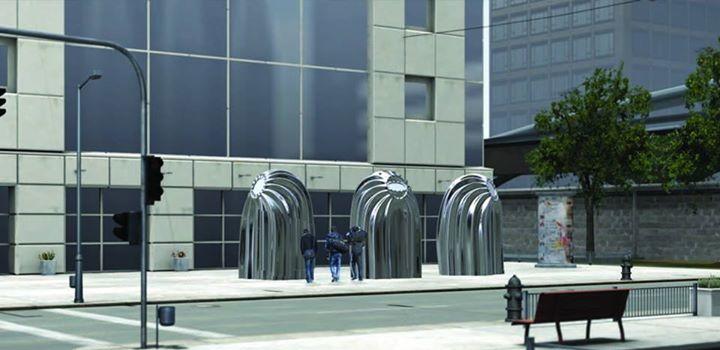The Tiny House Movement has risen on the horizon in the US as people seek a simpler, less expensive and capital-intensive way of life, and 3D printing could well prove critical the adoption of the lifestyle.
With the size of the typical American home somewhere near 2600 square feet, Tiny Houses are more likely to contain just 400 square feet, and some are as small as a Lilliputian 100 square feet. As environmental, financial and practical considerations lead people to reexamine the amount of their time and resources they dedicate to shelter, the alternatives are becoming more attractive.
3D printing service bureau, Sculpteo has pointed out in a blog post that there are numerous Tiny House designs available for free online, and best of all, many of the designs include parts which can, and should be 3D printed. Many of these designs can be found here. From custom brackets to shelves to just about anything else, 3D printers are able to fabricate many of the smaller components required for construction.
One possible solution by UCLA architecture and urban design students resulted in an entirely functional ‘microhouse’ which was built using 3D printing technology. Made at the UCLA 3M futureLAB, and covered by out sister site 3DPB.com last year, architecture and urban design professor Peter Ebner led his students in creating the project
With a bed, a kitchen, a full bathroom, storage space and a small lounge area and space for a television, the UCLA house includes all the minimum requirements of a home sweet home in just under 50 square feet. In addition, the portable structures can be “built” in a single day.
The master of architecture students in UCLA took on the challenged to create – in just 10 weeks – their prototype of the 3D printed microhome, and at 7 feet wide by 7 feet long and 11 feet tall, the design is two halves which are joined to form an enclosed shell.
“If you want to develop something new you have to work with different fields of engineering, like aerospace engineering, mechanical engineering, chemistry,” Ebner says. “We said, ‘Let’s start from the beginning to think about what 3D printing allows us to integrate in a way that’s not possible in traditional construction.’”
He says 3D printing technology may well prove an ideal solution to social problems from overcrowding to the lack of affordable housing.
For the 3M futureLAB microhome, created using a special sand by project partner Voxeljet, the walls are printed in one piece from one material. The interior walls of the microhome are designed to retain heat with a porous, bone-like structure. Holes printed into the walls are used for heating and cooling.
“In four or five years, a lot of houses on the market will be 3D printed,” Ebner says.
And 3D printing service bureau Sculpteo agrees. They say 3D printing, and the mass customization it enables, will one day offer benefits from complex geometries to safety features which protect homeowners against earthquakes or flooding.
They add that the additive nature of the 3D printing process means less waste is produced than with traditional manufacturing processes. Add to the mix the range of 3D printed items which can be printed such as hinges, hardware and various appliances and containers, and a whole range of futuristic living spaces can easily be envisioned and designed.
How much space do you need in your home? Could you live in a structure just under 50 square feet? Let us know in the 3D Printed Tiny House forum thread on 3DPB.com.
Subscribe to Our Email Newsletter
Stay up-to-date on all the latest news from the 3D printing industry and receive information and offers from third party vendors.
You May Also Like
Precision at the Microscale: UK Researchers Advance Medical Devices with BMF’s 3D Printing Tech
University of Nottingham researchers are using Boston Micro Fabrication‘s (BMF) 3D printing technology to develop medical devices that improve compatibility with human tissue. Funded by a UK grant, this project...
3D Printing Webinar and Event Roundup: April 21, 2024
It’s another busy week of webinars and events, starting with Hannover Messe in Germany and continuing with Metalcasting Congress, Chinaplas, TechBlick’s Innovation Festival, and more. Stratasys continues its advanced training...
3D Printing Webinar and Event Roundup: March 17, 2024
It’s another busy week of webinars and events, including SALMED 2024 and AM Forum in Berlin. Stratasys continues its in-person training and is offering two webinars, ASTM is holding a...
3D Printed Micro Antenna is 15% Smaller and 6X Lighter
Horizon Microtechnologies has achieved success in creating a high-frequency D-Band horn antenna through micro 3D printing. However, this achievement did not rely solely on 3D printing; it involved a combination...






























